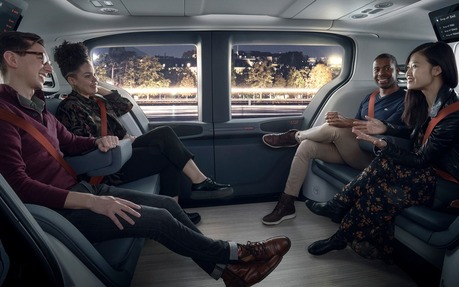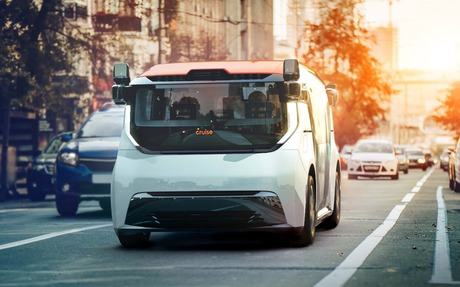Cruise Origin Unveiled as GM’s New Driverless Car
Cruise, a company owned by General Motors (majority stake), Honda and more, yesterday unveiled the next step toward a driverless future. Following the prototype based on the Chevrolet Bolt EV, here is a production model that looks radically different: the Origin.
Devoid of pedals and steering wheel, this autonomous shuttle vehicle is no bigger than an average car. The design is somewhat reminiscent of Toyota’s e-Palette Concept, although the latter was designed primarily for businesses.
- Also: GM to Double Resources for Electric and Autonomous Cars by 2021
- Also: Apple Co-founder has Given up on Fully Autonomous Cars

Sliding doors similar to those on a subway train give access to the cabin where two rows of seats face each other to facilitate interaction between passengers. There’s apparently as much legroom as “extra legroom” seats on an airplane, but as far as comfort in concerned the pictures released by Cruise are not particularly encouraging. Cargo space can be found behind the seats, while overhead monitors display key information.
Under the floor is the battery that feeds the Cruise Origin’s electric powertrain. Pivoting cameras and sensors at all four upper corners help the vehicle perceive what’s going on around it.

According to the company, each Origin will have a lifespan of up to 1.6 million kilometres, which is six times more than the average car. Unfortunately, no other technical detail was provided at the event.
Due to various delays, tests on public roads are still ongoing in California (with a safety driver inside). At this point, there is no specific timeline for the start of production. All we know is that a ride-sharing service using Cruise Origin shuttles will launch initially in San Francisco.
The reliability and safety of driverless cars remain big question marks. Several crashes including a few fatal ones have occurred in Teslas where the Autopilot feature was engaged. There have also been a couple of accidents involving self-driving Uber vehicles.
